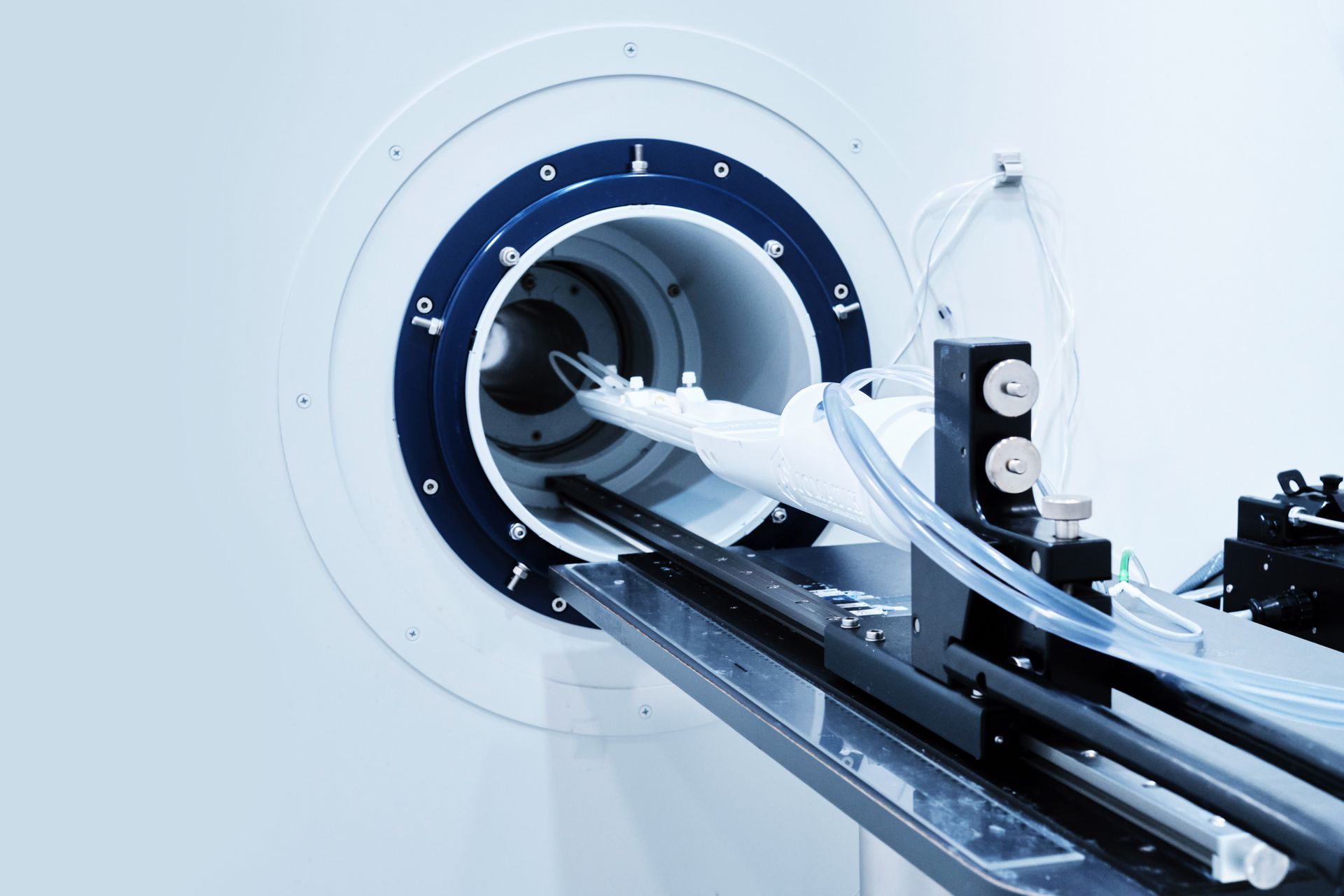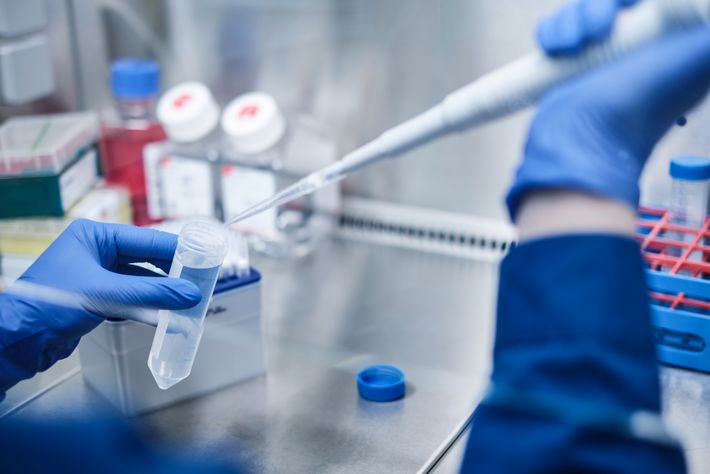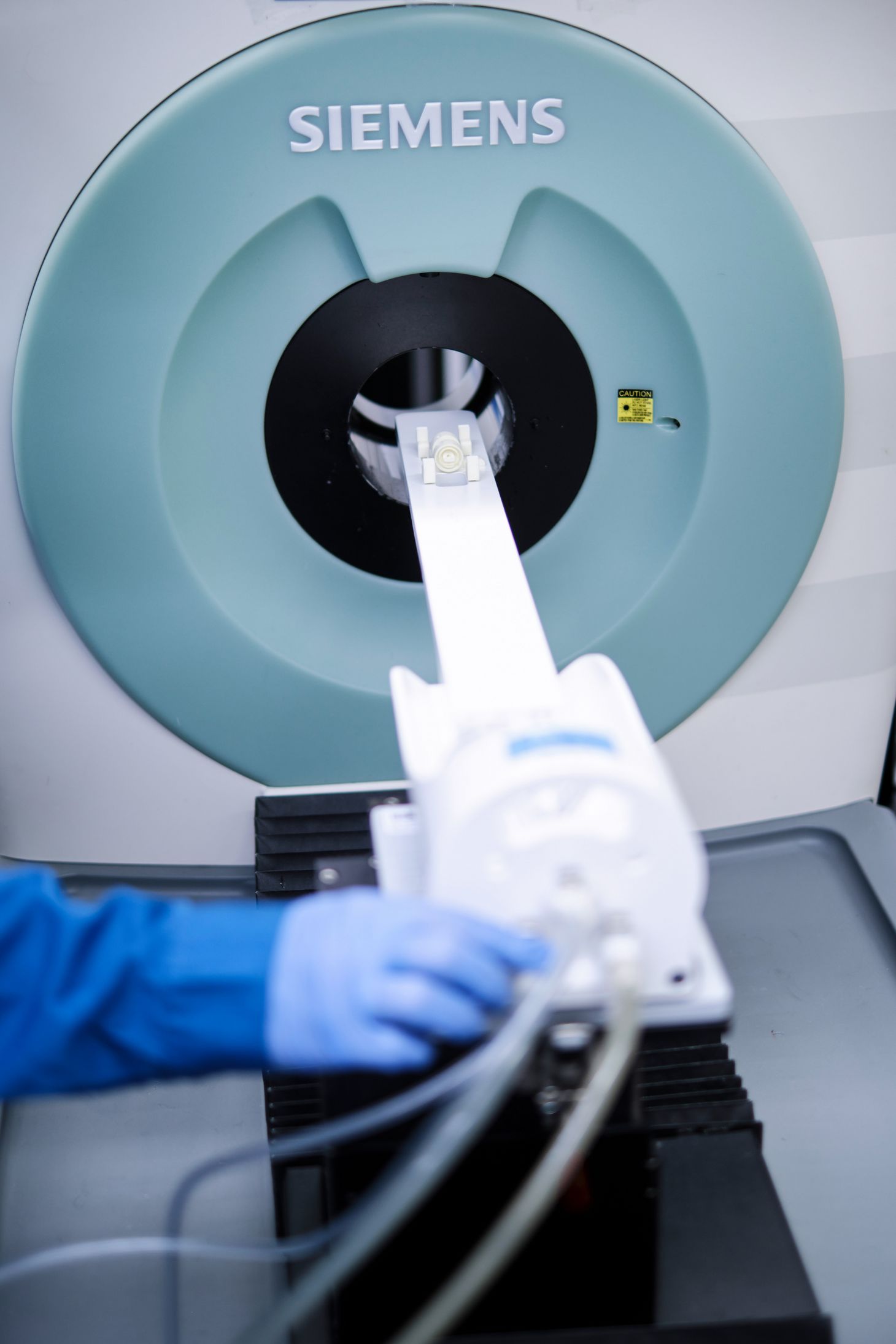
Early diagnosis of lung disease
The tiny markers used in medical imaging techniques have the potential to improve early diagnosis of many diseases. And now, researchers at the Werner Siemens Imaging Center in Tübingen have shown that these tracers can help detect pulmonary fibrosis at an early stage.
Pulmonary fibrosis, aptly described as scarring on the lungs, is the umbrella term for a wide range of lung diseases. In Europe alone, some 750,000 people are believed to be affected. Identifying the root cause is often difficult, as there are numerous possible factors, including infection, exposure to pollutants or even the side effects of drugs. Disease progression also varies from case to case. However, what all types have in common is that connective tissue in the lungs hardens and scarring sets in. As a result, it becomes increasingly difficult to breathe.
“In some cases, the hardening stagnates at some point, while in others, the fibrosis continues to develop,” says Nicolas Bézière, group leader at the Werner Siemens Imaging Center (WSIC) in Tübingen. He adds that the average survival rate after a diagnosis of pulmonary fibrosis is low, at just five years. The poor life expectancy also due to the fact that, at present, the disease is generally detected late, after changes in the lung tissue are already visible on X-rays or CT scans. By this stage, however, it’s generally too late for an effective therapy. “That’s because the drugs currently available only slow the formation of connective tissue,” Bézière explains. A lung transplantation is often the last option.
Observing processes in vivo
Bézière’s goal is to develop methods that enable earlier detection and diagnosis. He’s concentrating on an approach that’s well-established at WSIC: using radioactive tracers—radiolabelled molecules (radioisotopes) that are introduced into a living organism. Depending on the kind of molecule, these tracers are taken up by certain cells, or the body uses them for certain metabolic processes. Medical imaging techniques like PET scanners can then render the tracers in the tissue visible.
For their work on pulmonary fibrosis, Bézière’s team chose a tracer fitted with a copper isotope whose nucleus decays over time and releases tiny amounts of radioactive emissions. His group had already demonstrated that this molecule—64Cu-GPVI-Fc—attaches itself to newly forming connective tissue. The researchers then decided to test the tracer in a mouse model in which pulmonary fibrosis had been induced.
And: they could indeed track the progression of fibrosis in the mice using the tracer. In their study, which was recently published in TheJournal of Nuclear Medicine, they showed that the mouse lungs take up the tracer as scarring increases. “We saw that our approach works early and well,” Bézière says. He’s confident that, in future, the method can also be used to detect pulmonary fibrosis in humans sooner than is currently possible.
Even faster diagnosis
The next step in the project would be to study whether early detection facilitates the efficacy of a treatment. Bézière says this would entail conducting new experiments in which tracer detection is combined with a drug therapy.
However, he and his team have another arrow in the quiver: they’re working to develop a biomarker that can register the onset of so-called cell senescence in a tissue—a state in which cells stop dividing while nonetheless remaining metabolically active. The researchers in Tübingen have experience with senescence markers, mainly in cancer research. Bézière says it’s clear that senescent cells play a role in the development of fibrosis. Moreover, previous work by his colleague Simon Isser suggests that this kind of tracer could be used to detect pulmonary fibrosis already before the spread of damaged connective tissue can be confirmed.
Inflammation and fungal infections
Bézière and his team are using their tracer method in other areas of application, too, including arthritis. A third area of inquiry concerns infectious diseases. Two years ago, Bézière and his team published a study in the top-tier journal Nature Communications in which they demonstrated that an antibody-guided imaging technique can detect the lung disease pulmonary aspergillosis at an early stage.
Pulmonary aspergillosis is a fungal infection in the lungs that poses a great danger to people with a weakened immune system. It’s also often difficult to diagnose: to date, highly invasive interventions such as lung biopsies are necessary, which are stressful for patients. In their study, the researchers proved the benefits of their method in a mouse model, and in the meantime, they’ve tested their newly developed tracer on the first patients. “The principle works, but we still need to optimise it,” is how Nicolas Bézière sums up the work so far. It will be very interesting to see how the research develops.
> Pulmonary fibrosis study
> Aspergillosis study


![[Translate to English:] Benedikt Oeschger studiert Agrarwissenschaften an der ETH Zürich – und hat von der Schweizerischen Studienstiftung ein Werner Siemens-Fellowship zugesprochen erhalten.](/fileadmin/_processed_/c/4/csm_01-WSS-Studienstiftung-Oeschger_a040db0739.jpg)
![[Translate to English:] Die am Universitäts-Kinderspital Zürich entwickelte PV-Skin ist der weltweit erste Hautersatz, der vier verschiedene Zelltypen der menschlichen Haut enthält.](/fileadmin/_processed_/9/b/csm_01-Kunsthaut-014_S1A9948_2103562ec2.jpg)
![[Translate to English:] Die Geobiologin Cara Magnabosco sucht im BedrettoLab nach Mikroorganismen, die tief unter der Erdoberfläche leben. Sie könnten Hinweise darauf geben, wie Leben entstehen konnte.](/fileadmin/_processed_/1/c/csm_01-WSS-NEWS-Bedretto_DSC8324_c8ea4a52fd.jpg)